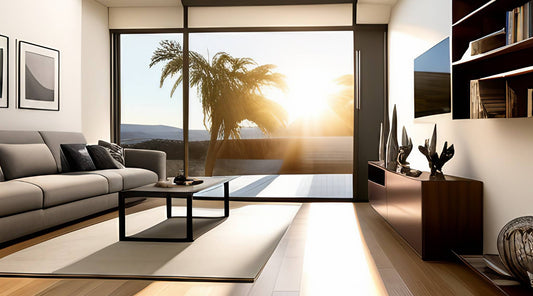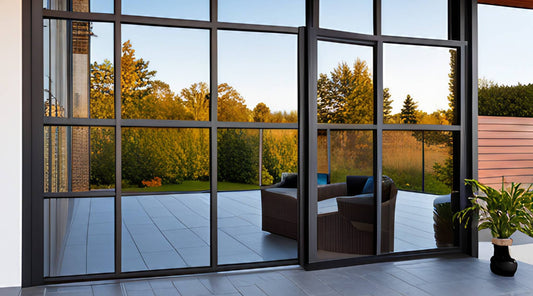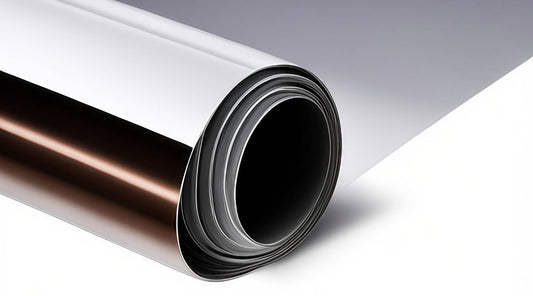Ever wonder if people can see through your window film? You’re not alone. Lots of folks think tinted or blackout window film makes them invisible. It’s a common idea—and often wrong. Some films give privacy during the day. Others work better for blocking light. But do any of them keep people from seeing in at night? This post gives clear answers, plus examples from real people who’ve used them. We’ll help you figure out which window film keeps your space private, bright, or dark—whatever matters most to you.
What Does Tinted or Blackout Window Film Actually Do?
Window films control light and how much people can see through glass. Tinted films dim the light coming in but don’t block it all. Blackout films block everything—no light comes in or out.
How It Works
Window films use layers to block sunlight and heat. They’re made with dyes, metals, or ceramics. These materials help lower glare, reduce heat, and stop UV rays. The most important number to look at is Visible Light Transmission (VLT). VLT shows how much light can pass through. Lower VLT means the film is darker and gives more privacy.
Film Types
- Dyed Films: These absorb sunlight and reduce glare. They're cheap but don’t give strong privacy at night.
- Metal Films: These reflect light and heat. They give good privacy during the day but lose it at night.
- Ceramic Films: These block heat and UV rays but are clear. They’re strong but not great for privacy.
- Blackout Films: These block all light. Use them if you want a dark room with full privacy. Learn how to tailor blackout films to your space.
- Frosted Films: These blur shapes. People can’t see in clearly, but light still comes through.
Window films provide many benefits, but privacy depends on the type of film and when it’s used.
Can You See Out During the Day?
Yes. In most cases, you can see outside through tinted film in daylight. That’s because light outside is stronger than light inside. This lets you see out while others can’t see in.
Why This Works
Some films act like a one-way mirror. The bright outside reflects off the film. From the outside, people mostly see their own face. But from inside, you get a clear view.
This only works when the sun is up. When it gets dark outside and you turn on the lights inside, the effect goes away.
Example: Maria’s Condo
Maria lives in a busy condo downtown. Her windows face the street. She wanted light but hated feeling watched. We used dual-reflective film on her windows. It gave her privacy during the day and reduced glare. At night, she used light curtains. She said, "It’s like sunglasses for my place."
If you want to see out and stop people from seeing in during the day, tinted or reflective film is a good choice. But they don’t work the same after dark.
What Happens at Night with Lights On?
At night, when it’s dark outside and lights are on inside, people can usually see in. That’s because your windows become bright from the inside. The film can’t block the view anymore.
Why This Happens
Window films reflect light. But they can’t reflect it if it’s dark outside and bright inside. Your film becomes clear instead of reflective. That means people outside can see in.
Example: Dan’s Home Office
Dan works late in his home office. He put reflective film on his windows. It worked great during the day. But one night, a neighbour texted, "Nice dance moves!" Dan had no clue people could see in. We added a frosted film with privacy features to the lower part of his windows and blackout roller blinds for nighttime. Problem solved.
If you care about privacy at night, you’ll need more than film. Add curtains, blinds, or blackout film to make sure you’re not on display.
Final Thoughts and What to Do Next
Window film helps with privacy and light. Tinted films let you see out during the day and keep others from seeing in. But at night, most don’t help with privacy. Blackout films block all views all the time. Choosing the right film depends on how much light you want and when you want privacy.
Quick tips:
- Tinted film = daytime privacy, but not at night.
- Reflective film = good for day use.
- Blackout film = full privacy all day and night.
- For night privacy, pair film with blinds or curtains.
Frequently Asked Questions
1. Can people see through tinted window film during the day?
No, most tinted window films provide daytime privacy because outdoor light is brighter than indoor light.
2. Does blackout window film let any light in or out?
No, blackout window film blocks 100% of light both ways, offering full privacy at all times.
3. Will tinted window film still work at night with lights on?
No, if your lights are on and it’s dark outside, people can usually see in through tinted films.
4. Is there a window film that provides privacy both day and night?
Only blackout or frosted films offer full-time privacy; reflective or tinted films lose privacy at night.
5. Can I combine window film with other privacy options?
Yes, many people use blinds or curtains along with film to maintain privacy during all lighting conditions.




